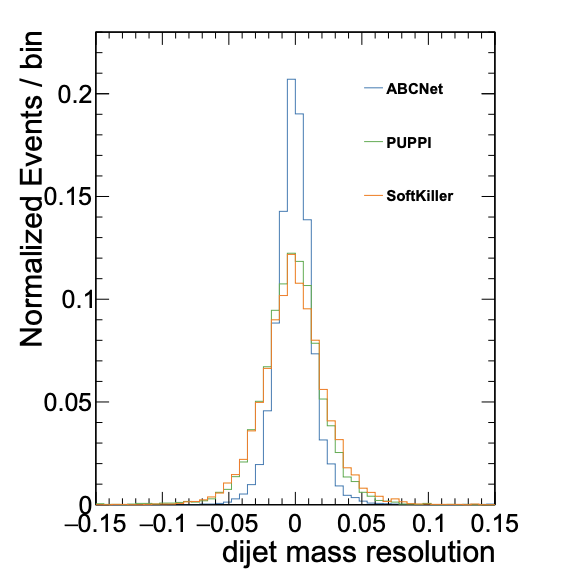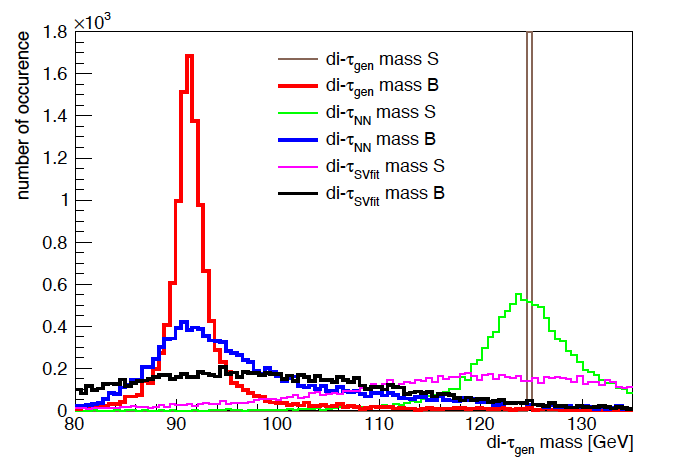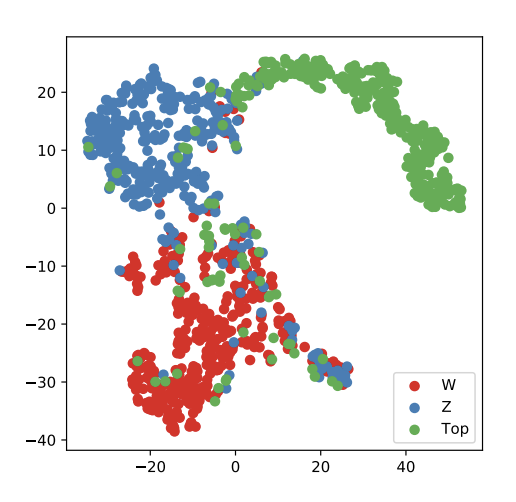Physics objects and methods
TAU IDENTIFICATION: Many new-physics models predict new particles that preferentially decay to a pair of tau leptons. However, the tau lepton itself has a very short lifetime and can decay in many different ways. Therefore we have helped develop and maintain dedicated identification algorithms of tau decays that have proven to be well understood and well modeled by our simulations [Tau1]. We have also developed new tools for better-reconstructing particles decaying to tau leptons using machine learning [Tau2].
B-TAGGING IDENTIFICATION: Identifying particles is one of the major challenges in particle physics. The identification of B hadrons relies on the fact that such particles decay after a measurable distance (~1mm) within the pixel detector. Sophisticated algorithms combine this information with other measurements to search for B hadrons in every collision and have played a key role in recent observations at the LHC. To make it even more difficult, a boosted particle may decay into a narrow jet of two b quarks. We helped develop an algorithm using machine learning to identify these [double-b].
W-TAGGING IDENTIFICATION: As described above, heavy particles may decay into W and Z bosons, imparting them with sufficient momentum that they become collimated, boosted jets. We have developed and calibrated tools to identify such signatures, and these tools have been deployed throughout the CMS experiment [W-tagging1, W-tagging2].
QUARK-GLUON IDENTIFICATION and PILEUP REDUCTION: We have created a method to classify quark and gluon jets and reduce pileup using a graph neural network enhanced by attention mechanisms called ABCNet [ABCnet], inspired by modern methods in point cloud processing. The ABCnet architecture does not allow the extraction of global information defined by the properties of the entire point cloud. We have expanded the ABCNet architecture, taking advantage of recent developments of the Transformer architecture applied to point clouds [Transformer].
ANOMALIES DETECTION: We are developing anomaly detection algorithms based on advanced machine learning techniques. In particular, we created UCluster and an algorithm in which information in the embedding space created by a neural network is used to categorize collision events into different clusters that share similar properties [UCluster].


